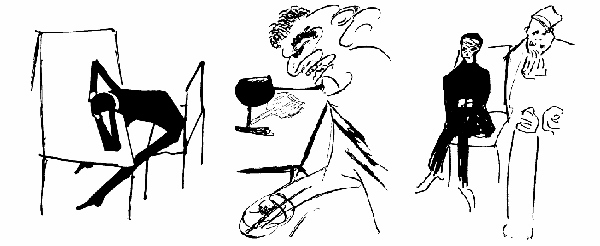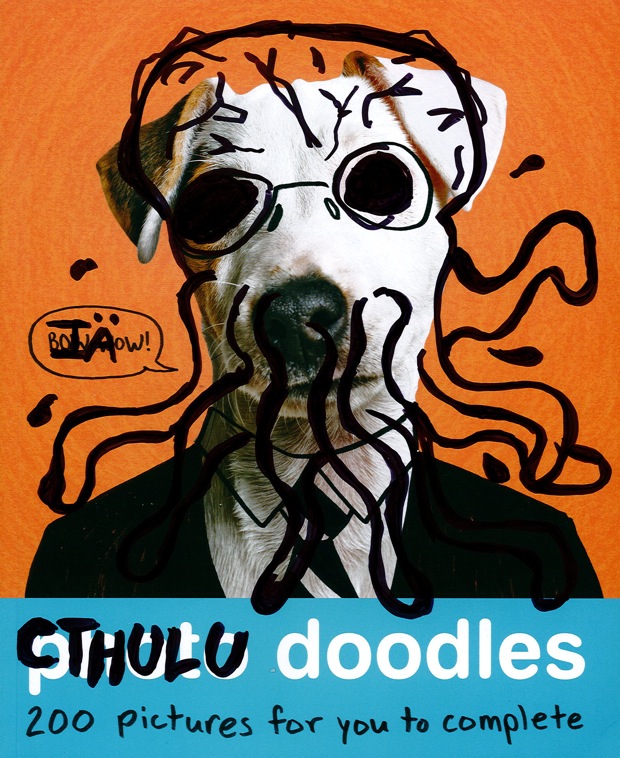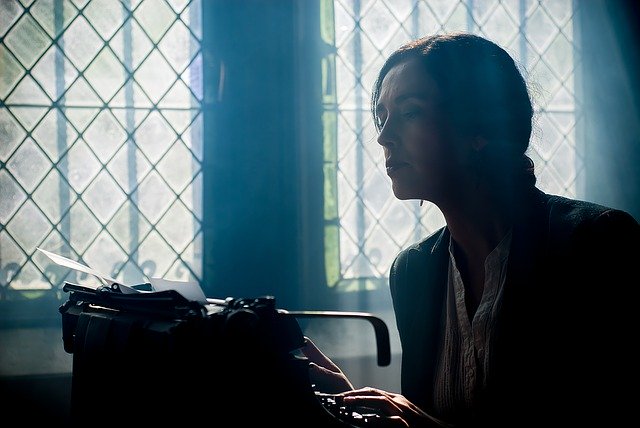National Doodle Day: Authors Who Doodle
Doodling is often looked at as a juvenile waste of time. The meaningless lines and scribbles one puts on the margins of far more important works are things to hide, to be ashamed of, to keep yourself from doing.
But that shouldn’t be the case. As educator Sunni Brown says in her TED Talk on the very subject, we as a culture are so focused on verbal information that we are blind to the value of doodling. Expressing thought in visual, abstract ways helps cognitive function. Smart people doodle, because doodling helps you become smart.
So it should be no surprise that some of the very best authors, clear masters of presenting verbal information, are also prolific doodlers. And since today is National Doodle Day, here are some favorite authors' doodles:
J.K. Rowling

The reigning queen of magical fantasy couldn’t have written the Harry Potter series without doodling. She drew every character and creature before she wrote about them. She even drew the effects of magical spells, often in several sequential drawings, like an animation storyboard.
John Keats

Before he was revered as a great romantic poet, John Keats was just a schlubby medical student, doodling flowers and butterflies in the margins of his notes. He also clearly was a heavy metal fan a good hundred and fifty years before it was invented, as evidenced by the skulls he drew on the cover of one of his notebooks.
Jorge Luis Borges

Borges once remarked that meeting Keats was one of the great experiences of his life. One wonders if they discussed their shared love of doodling. Borges contined to doodle even as his sight deteriorated, creating abstract scribbles of ink.
Allen Ginsberg


Not content with providing a mere signature, Ginsberg would doodle all over proffered works for fans. Like Keats, he too was drawn to drawing skulls and flowers.
Vladimir Nabokov

Contemplating Gregor Samsa’s transformation is one thing, doodling it is quite another. But Nabokov clearly could not get past the first page of Kafka’s Metamorphosis without working out just how that giant cockroach looked.
Franz Kafka

Kafka, for his part, doodled angry, accusatory faces and lonely, depressed men. Which, when you consider his work, seems entirely appropriate.
Henry Miller

Miller’s doodles, however, offer a sharp contrast to his work, full of open lines and an almost anime-like sensibility. Was Miller fond of anime? He’d probably like JoJo’s Bizarre Adventure…
Sylvia Plath

Plath would cover her diary in doodles. While roses might come to mind as a prominent subject, the sinister, anthropomorphized food is a far more compelling window into Plath’s mental state at the time. Look out for that hot dog!
Samuel Beckett

Beckett’s doodles tend to be slightly abstract, knowing faces with prominent noses.
Charles Bukowski

In case you were wondering if Bukowski did this doodle with a bottle in hand, he drew one in there. Just so you’d know.
Kurt Vonnegut

Perhaps the king of all literary doodlers, Vonegut has incorporated his doodles into his written work several times, most successfully in Breakfast of Champions. Now, there’s a man who understands the importance of verbal and visual information.

Jadzia Axelrod
Jadzia Axelrod is an author, an illustrator, and a world changer. Throughout her eventful life she has also been a circus performer, a puppeteer, a graphic designer, a sculptor, a costume designer, a podcaster and quite a few other things that she’s lost track of but will no doubt remember when the situation calls for it.She is the writer and producer of “The Voice Of Free Planet X” podcast, were she interviews stranded time-travelers, low-rent superheroes, unrepentant monsters and other such creature of sci-fi and fantasy, as well as the podcasts “Aliens You Will Meet” and “Fables Of The Flying City.” The story started in “Fables Of The Flying City” is concluded in The Battle Of Blood & Ink, a graphic novel published by Tor.She is not domestic, she is a luxury, and in that sense, necessary.




